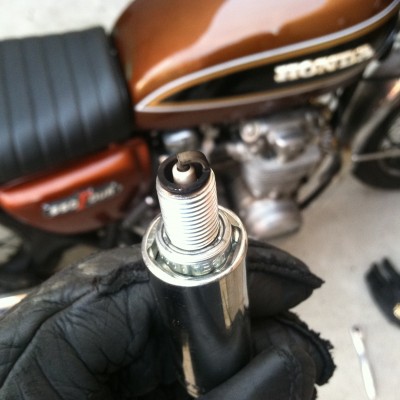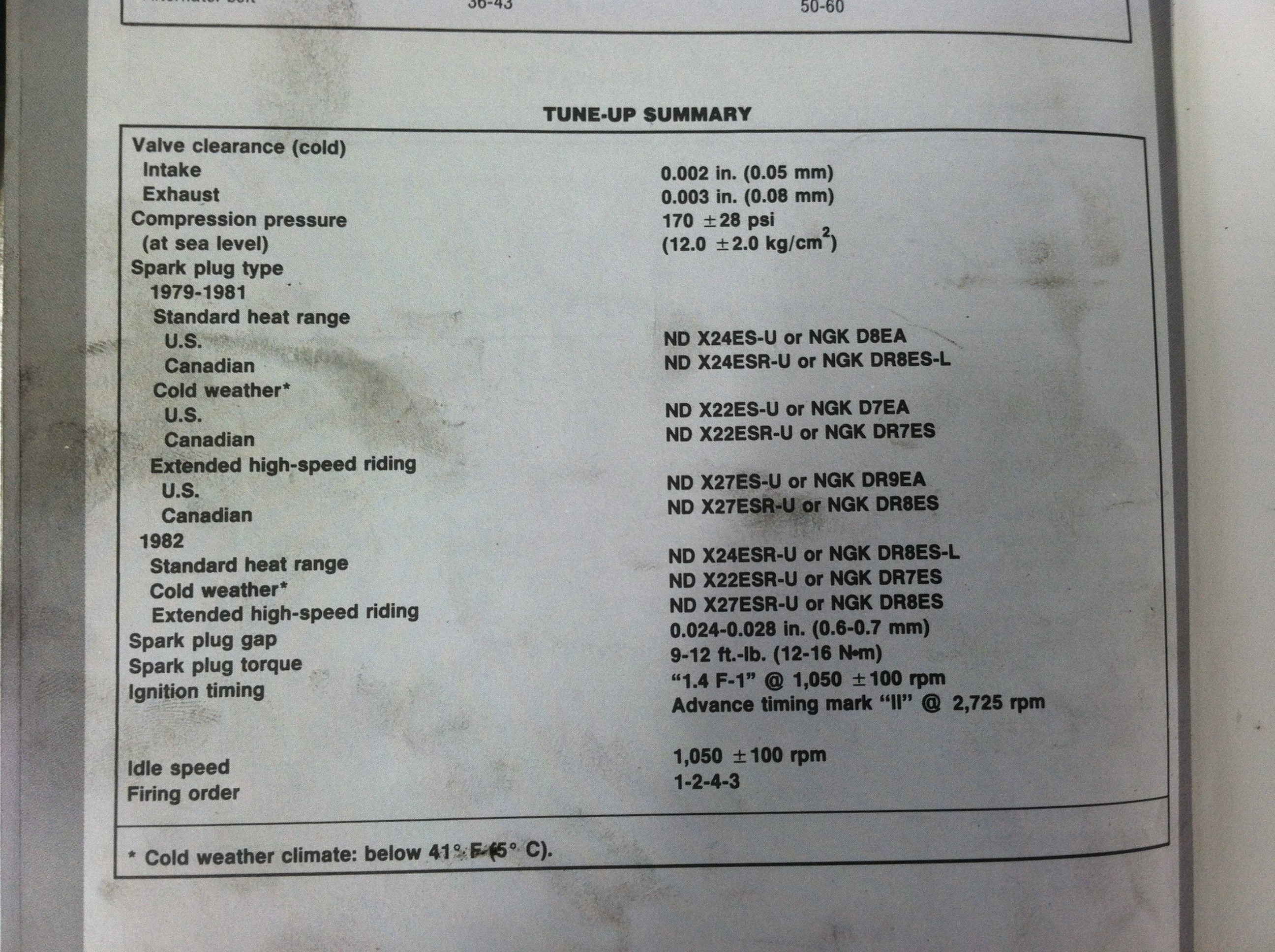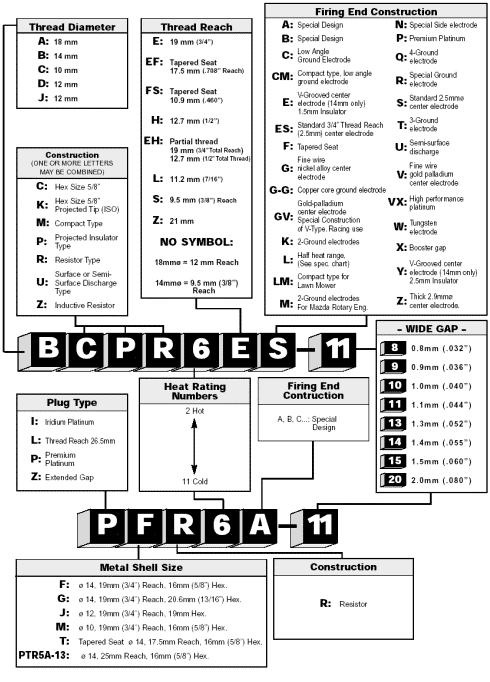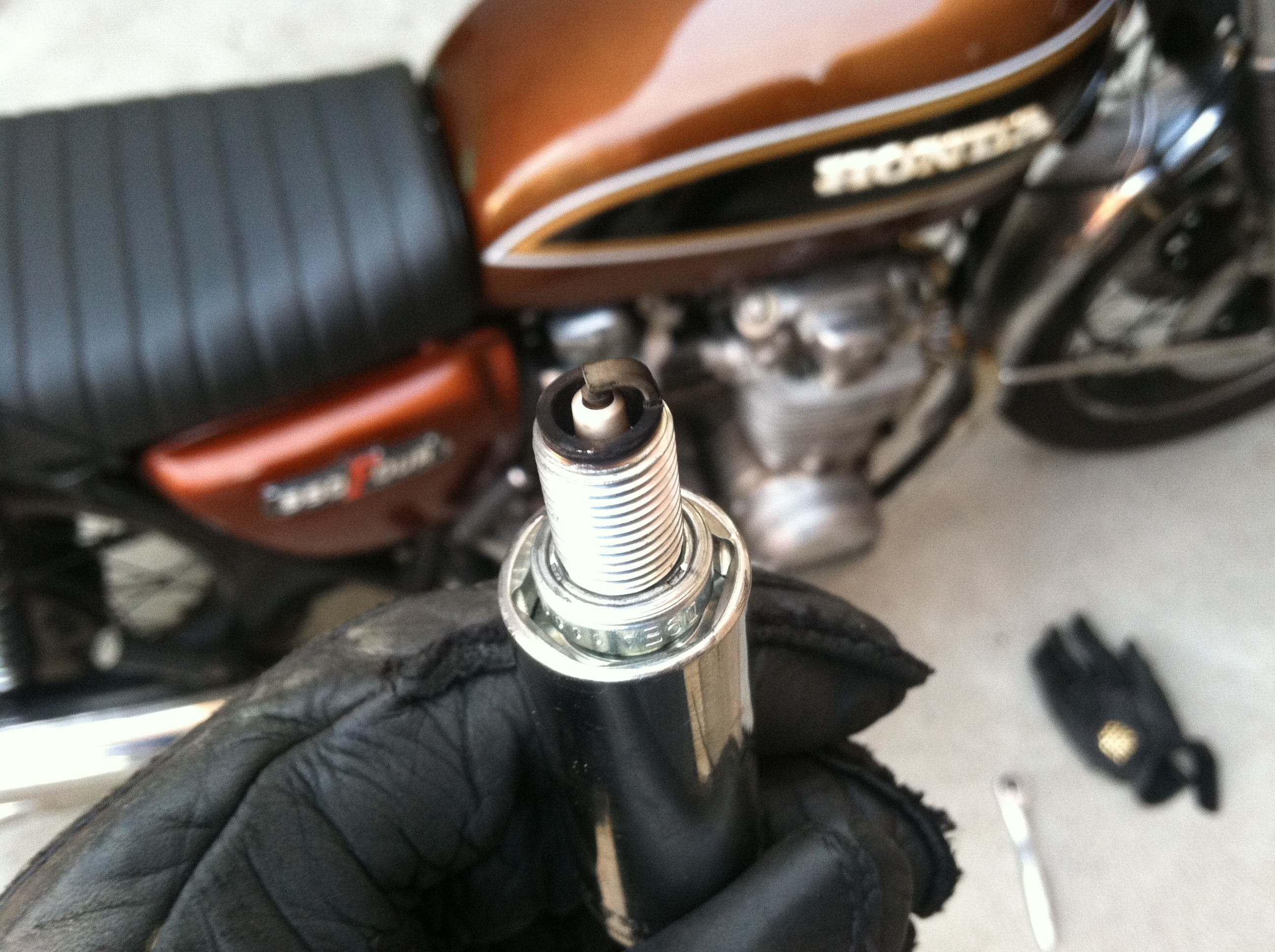I am currently working on tuning my 1976 CB550 for pods and a CB650 cam with the help of the jetting wizard Ed. We’ve been discussing which heat number to run. Out of curiosity, I did some reading up on spark plugs and learned more than I expected.
3 Important things according to NGK:
-
1. Anti-seize is NOT recommended
“NGK spark plugs feature what is known as trivalent plating. This silver-or-chrome colored finish on the threads is designed to provide corrosion resistance against moisture and chemicals. The coating also acts as a release agent during spark plug removal. Anti-seize compound can act as a lubricant altering torque values up to 20 percent, increasing the risk of spark plug thread breakage.”
2. Selecting a Heat Range
“It is believed by many that the heat range measures spark temperature or intensity. This is incorrect as the heat range is actually a measurement of the plug’s ability to transfer heat away from the tip of the spark plug. One cannot change the temperature of how hot a fuel burns.
A hot spark plug has an insulator design that will be slower to draw heat away from the plug tip (thinner insulator mass), whereas a cold plug has an insulator design that will be faster to draw heat away from the plug tip (thicker insulator mass). For a spark plug to function properly it must have a tip temperature hot enough to invoke self-cleaning, while remaining cool enough to avoid pre-ignition.
For most vehicles, the factory recommended heat range is sufficient; however, on some modified or special-use engines, alternative heat ranges may be necessary.”
3. Torque
“Torque is critical in the plug’s ability to dissipate heat and perform properly. The spark plug holes must always be cleaned prior to installation; otherwise, you may be torquing against dirt or debris and the spark plug may actually end up under-torqued, even though your torque wrench says otherwise. Of course, you should only install spark plugs in a cool engine, because metal expands when it’s hot and installation may prove difficult.”
| Spark Plug Type | Thread Diameter | Aluminum Cylinder Head (lb-ft.) |
|---|---|---|
| Flat seat w/ gasket | 18 ø mm | 25.3~32.5 |
| Flat seat w/ gasket | 14 ø mm | 18.0~21.6 |
| Flat seat w/ gasket | 12 ø mm | 10.8~14.5 |
| Flat seat w/ gasket | 10 ø mm | 7.2~8.7 |
In the Clymer manual for the CB650 gave some interesting info regarding selecting a heat range depending on riding type and climate which I have not seen in other manuals:
D7EA – Cold weather climate
D8EA – Standard heat range
D9EA – Extended high-speed riding
Here’s how to decipher the spark plug codes. For example, I am running a D9EA:
D = 12mm thread ø
9 = Heat rating
E = 19mm thread reach
A = Firing end construction
One response to “Spark Plug Guide”
Leave a Reply
You must be logged in to post a comment.






When I was building clapped out 2-stroke mopeds, we’d run colder plugs so we could run incredibly advanced timing without having to deal with too much pre-detonation and seizing due to high temps.
I also run one step colder plug in my xr650l because we do a lot of high rpm fast trail riding down here and it get hotter than a billygoat in a pepper patch down here in North Carolina in the summer.